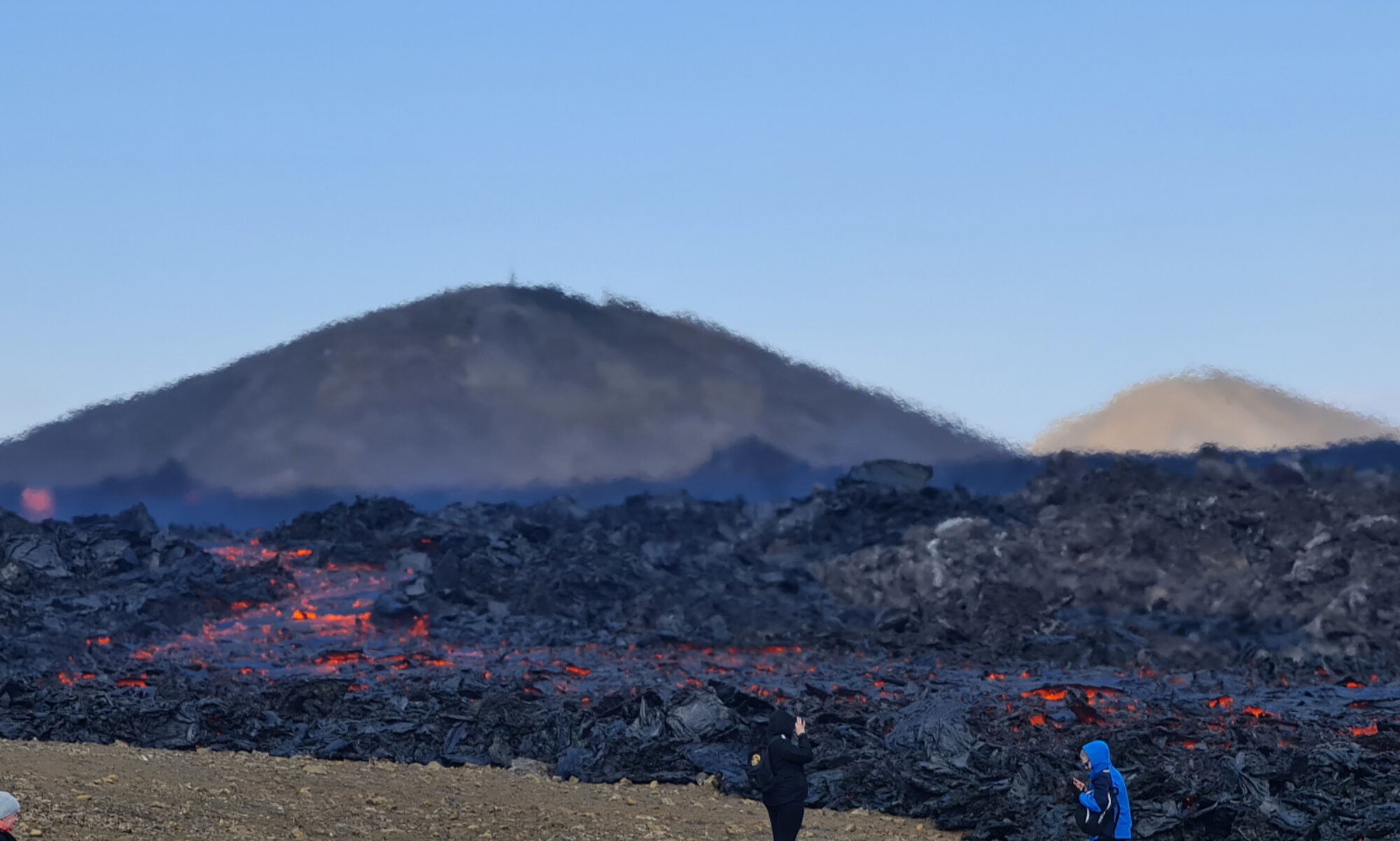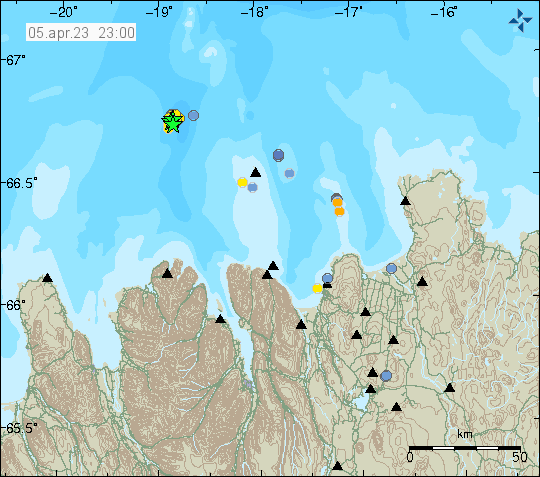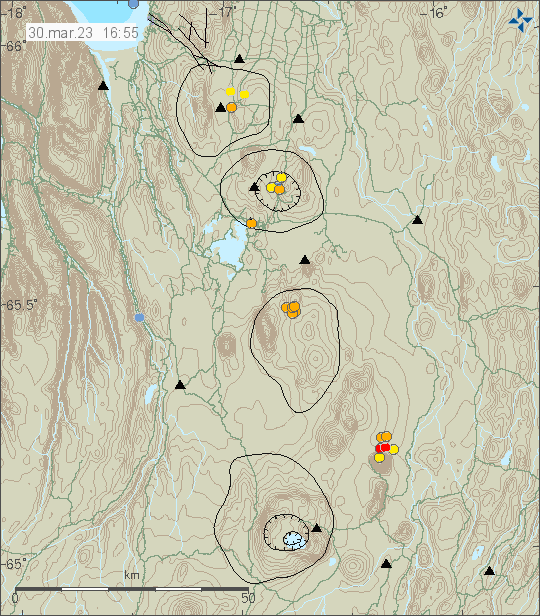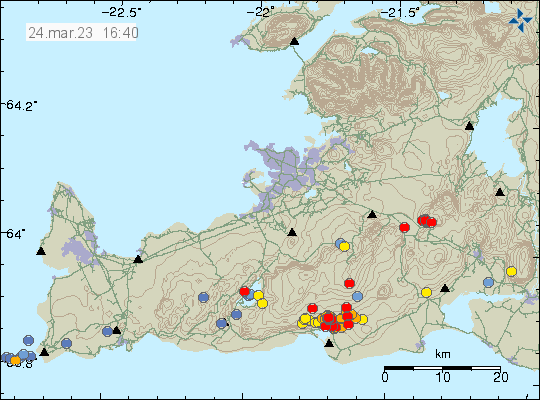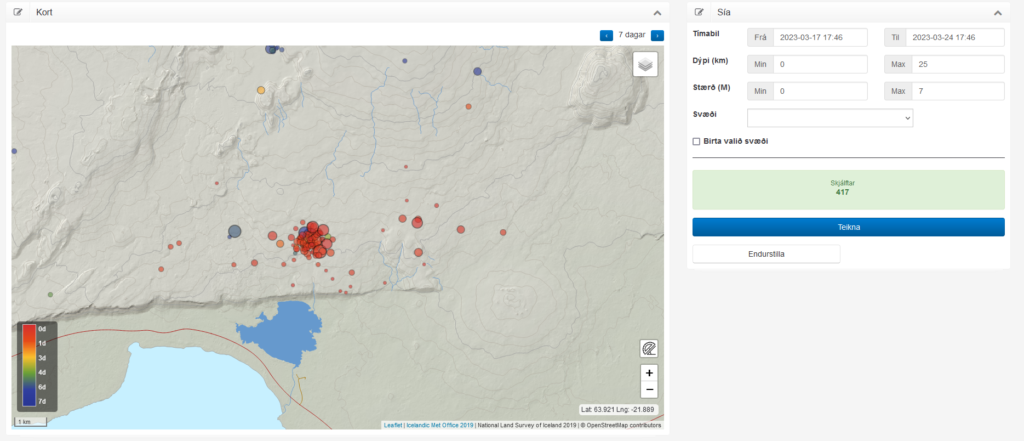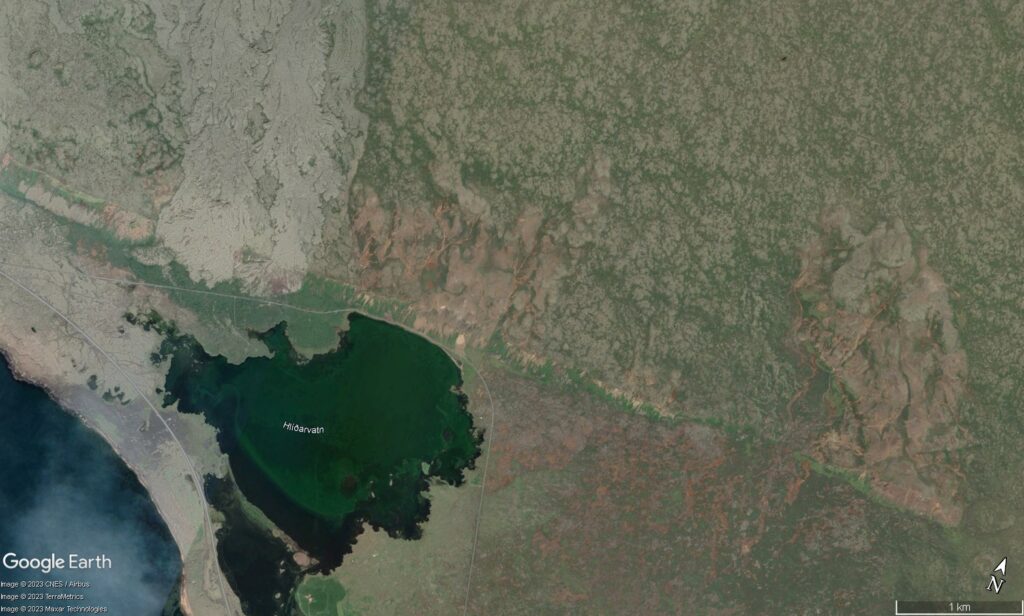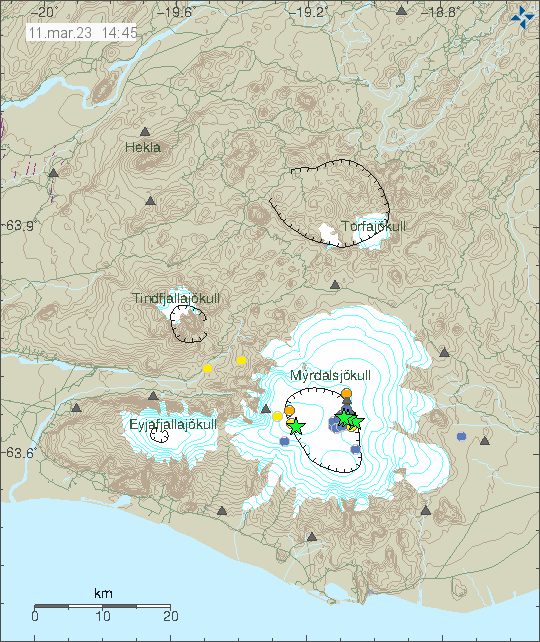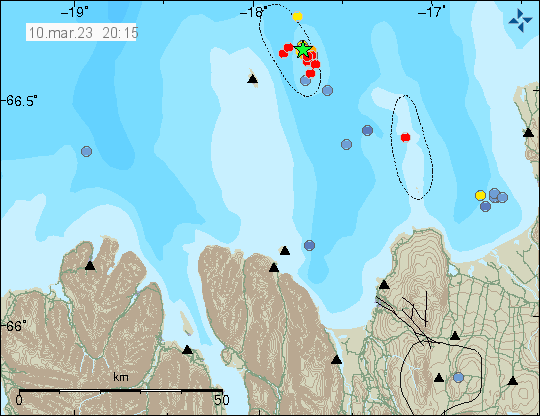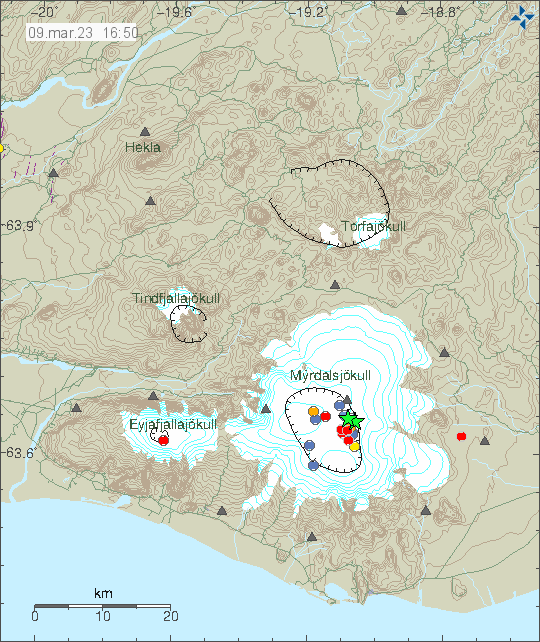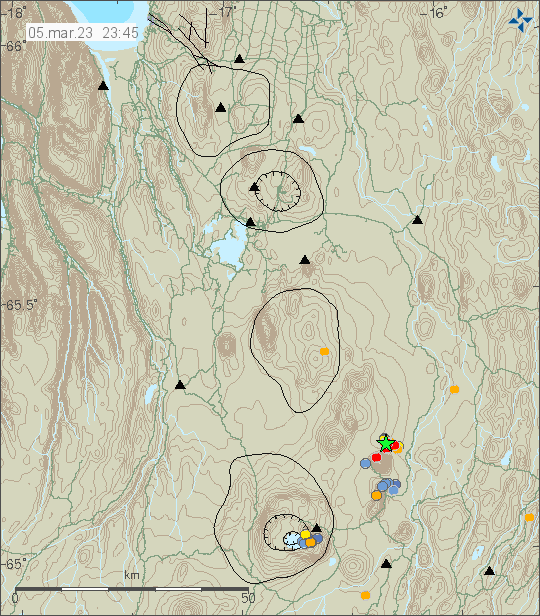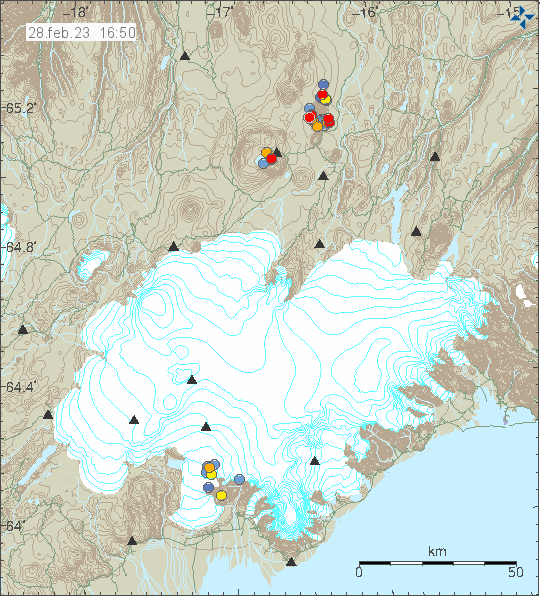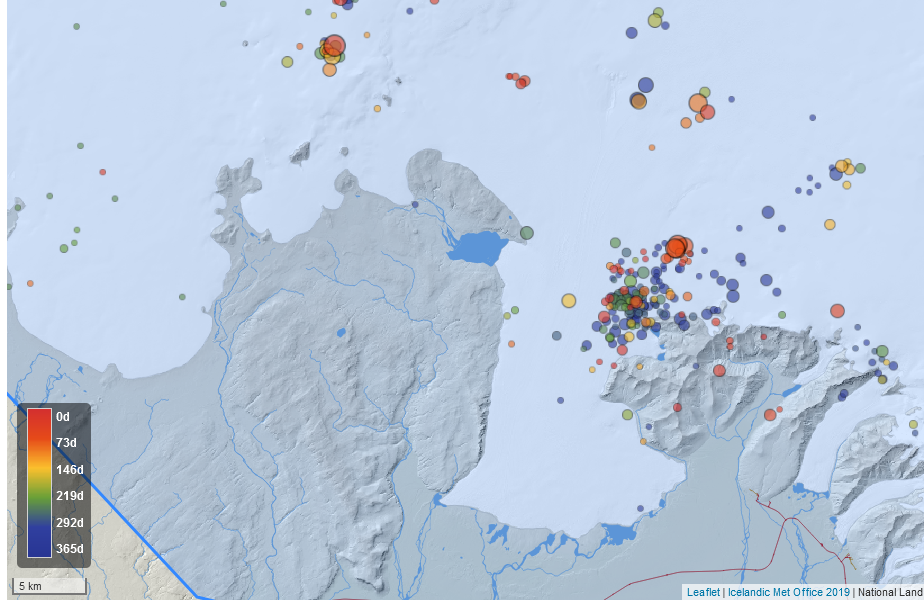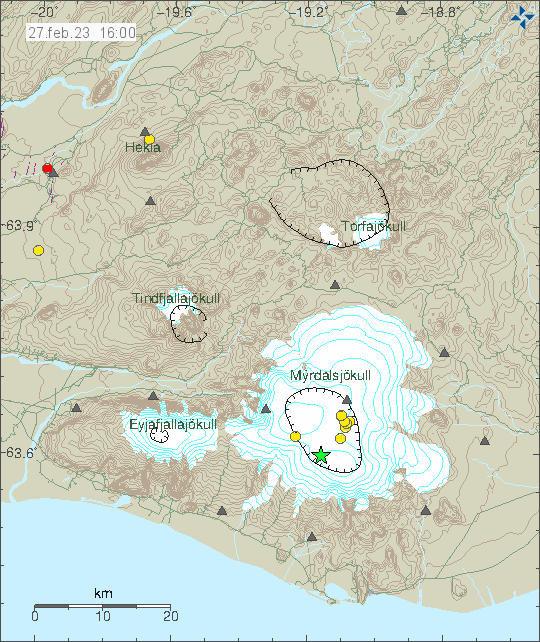Today (13. April 2023) there has been a small earthquake swarm in south part of Brennisteinfjöll volcano. This location had an earthquake swarm few weeks ago at this same location. It also was small in magnitude. Depth of this earthquake swarm has now decreased from 7 km to around 3 km. At least that is what it seems, based on the current earthquake data.
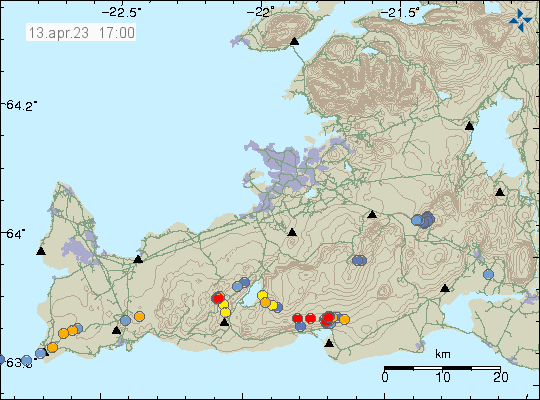
This earthquake activity shows a sign of magma movement. It is my opinion that the magma is now pushing it self trough the crust at this location. That can take a while, up to several weeks before an eruption starts. I did see something similar happen before the Bárðarbunga volcano eruption in 2014. That process took good three months before the eruption and was marked by small earthquake swarm like this one. How long this is going to take is impossible to know, because what type of crust is at this location is not well understood (outside of types of rock it is made out of at the first top layers). This is in my view an earthquake activity that needs to be monitored, because of possible eruption risk at this location. This is directly north of a small lake south of the earthquake swarm. If an eruption happens and the lava flows into the lake, that might create a lot of problems.
This earthquake swarm can be viewed here in more details. The website is Skjálfta-Lísa and is only in Icelandic.
